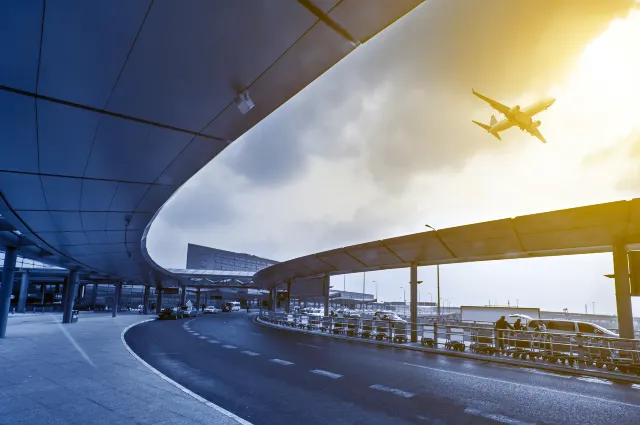Beijing Capital International Airport: PEK Airport Practical Guide 2024
Catalogue
- Transportation Options
- 1) Airport Express
- 2) Airport Shuttle
- 3) City Bus
- 4) Inter-Terminal Airport Transfer
- Regarding Temporary Tourist Visa
- Arrival and Departure Information
- BCIA Lounge Areas and Terminal Amenities
- 1. Terminal 1
- 2. Terminal 2
- 3. Terminal 3
- 4. Publically-available Amenities and Services
- Dining and Duty-Free in PEK Airport
Show More
Beijing Capital International Airport (BCIA) is the city’s primary hub for international and domestic flights. Located approximately 32 km northeast from the city center, international travelers flying to/from Beijing can expect to pass through BCIA. As the new Daxing International Airport fully comes on line, some international flights will shift there. For now, however, BCIA remains Beijing’s gateway to the world. This short guide provides a clear overview to the airport’s vast facilities and myriad offerings. We’ll have you in and out in no time. If you find yourself facing a long layover, don’t worry because we’ve got you covered on some great lounge recommendations. This is our guide to Beijing Capital International Airport.

There are no shortage of public transportation options to and from BCIA. These include: 1) the Airport Express rail link, 2) the BCIA Airport Shuttle network, and 3) the Beijing public bus system.
Available from the Dongzhimen and Sanyuanqiao Beijing Metro stations, the Airport Express is a fast and convenient way to get from the central city to BCIA. Once you’re in the Beijing subway system, navigate to either station and transfer to the Airport Express. At BCIA, the Airport Express stops at Terminal 2 and Terminal 3, where all international flights arrive and depart. A one-way ticket costs RMB 25.

BCIA is serviced by an extensive network of shuttles connecting various parts of the city. Consult the service map to see which route is most convenient for you given where you’re staying. The fare is variable, increasing with distance traveled. A one-way ticket from points within Beijing city costs no more than RMB 30. In addition, there are regional and interprovincial shuttles to surrounding destinations including Tianjin (RMB 82). Fares again vary according to distance.
Beijing’s public bus network provides relatively convenient access to BCIA. Approximately a dozen routes service the airport. This is a good choice for those looking to connect to various subway lines. Consult the service map to see which line best meets your needs. A one-way trip will cost no more than RMB 11.
Finally, BCIA provides free shuttle service between terminals. This means you can, for example, take the Airport Express to Terminal 2 and use the free shuttle to get to Terminal 1.
In an effort to promote tourism, the Chinese government offers short-term visa-on-arrival to citizens from (currently) 53 countries. Travelers holding passports from one of these nations can obtain either a 72- 0r 144-hour short-term tourist visa upon arrival. In order to qualify you must show proof of onward travel. If you intend to apply for a visa-on-arrival make sure you: 1) follow airport signage to the appropriate line, 2) hold a valid passport from an approved country, 3) hold a valid ticket for onward travel out of China, and 4) can show a hotel reservation or other proof of accommodation.
Here are some additional things to keep in mind. Short-term visa-on-arrival confines you to the Beijing, Tianjin, Hebei region. If you need to travel to other provinces, you must obtain a standard visa from a Chinese consulate prior to landing in China. Short-term visa-on-arrival holders are NOT permitted to take international trains to Moscow, Ulaanbaatar, or North Korea. Those looking to depart China via international rail connections to the north must obtain visas prior to landing in China. If you’re making an international connection through BCIA, a 24-hour transit visa is available upon arrival. This allows for multiple connections inside China provided you do not exceed the 24-hour time limit. The 24-hour transit visa is available to all travelers regardless of nationality (with some minor exceptions). You do not need to hold a passport from one of the approved countries on the 72- and 144-hour visa-on-arrival list in order to apply for a 24-transit visa.
Western visitors to China sometimes find arrival and departure procedures confusing. Passengers landing on international flights can expect the following at BCIA. After deplaning and entering the terminal you will first be requested to submit fingerprints (normally at an automatic fingerprint station). From there you will pass through a health inspection screening where authorities scan for those with a fever or other outward signs of illness. Next you must present your travel documents (passport, visa, and arrival card) for inspection. Arrival cards are normally distributed during the flight or are available once you land. If you need to apply for short-term visa-on-arrival, follow the signs to the correct line. After you’re cleared through the frontier inspection, proceed to baggage claim and retrieve your luggage. Finally, go through the customs inspection where you must declare any restricted items you’re carrying. Once past customs you may leave the airport and enter Beijing.
Travelers departing China through BCIA essentially can expect to go through the arrival procedures in reverse. After you present your travel documents at the frontier inspection, the border agent will place an exit stamp in your passport. From there pass directly into airport security screening and enter the terminal waiting area.
Following renovation and expansion leading up to the 2008 Beijing Olympics, BCIA is now one of Asia’s busiest airports. The three terminals currently in operation offer a range of amenities and services.
Terminal 1 is the smallest terminal and serves only domestic flights. An indoor walkway links Terminal 1 to neighboring Terminal II. Lounge options include the ICBC VIP Lounge, the CIP Lounge, the Hainan Airlines Transit Lounge, and the Hainan Airlines Fortune Wings Lounge. Lounge access is reserved for those holding qualifying tickets and those who have purchased a BCIA Airport Lounge Pass.
Terminal 2 serves both domestic and international flights. If you’re flying international outbound make sure to check whether your carrier users Terminal 2 or Terminal 3. Various lounge facilities are available to passengers in Terminal 2. These include the China Southern Sky Pearl Lounge, China Southern First & Business Class VIP Lounge, two ICBC VIP Lounges, and several Trvok Lounges. Terminal 2 is essentially bifurcated with domestic flights in one section and international flights in another. Different lounge options exist in the different sections.
Built for the 2008 Beijing Olympics, Terminal 3 is by far the largest and best equipped terminal at BCIA. An automated people mover transports passengers between the terminal’s three sections. Known as the “Dragon Terminal,” it handles both international and domestic flights. Until surpassed by Beijing’s new Daxing International Airport terminal, BCIA Terminal 3 was the largest single terminal building in the world. International flights use concourse E (aka the yellow concourse). Lounge options here include The Emirates Lounge, the Cathay Pacific Lounge, the BGS Premier Lounge, and others.
All three BICA terminals offer public Wi-Fi. However, access requires a code sent either to a valid Chinese domestic mobile phone number or obtained from a kiosk machine in the terminal. A valid passport is required to use the Wi-Fi kiosks. ATMs and currency exchange are available in all three terminals as are duty-free and dining options. Both Terminal 2 and Terminal 3 have various public “lounge” areas featuring creative artwork and various places to relax. These include the Resting Lounge in Terminal 2, the Tulip Lounge in Terminal 3, and the Dream Garden in Terminal 3. These areas, while not offering the food and beverage services available in the paid lounges, are fun places to relax before a flight. Make sure to check out the airport’s various art installations, especially the Starry Corridor in Terminal 3.
All terminals at BCIA offer a variety of dining and duty free options. Restaurants are located both prior to check in and throughout the gate area. An abbreviated list of dink and dining options include Starbucks, Costa Coffee, KFC, McDonald’s, Master Kong Beef Noodles, and Celestial Cuisine Restaurant. Duty-free shopping is likewise available in all terminals. The most convenient shops are located immediately after you exit from airport security screening. Depending on what you purchase, duty-free items can be transported to the plane for you to pick-up at your destination. Please note this service is not always available and you should make sure to check with the store attendant before making any purchases.
Beijing Capital Airport is a world-class travel hub. Considerable resources have gone into improving the overall travel experience at BCIA. While it may not offer the same luxury and magic found in Singapore’s Changi Airport, it’s a far cry from the frustrating and altogether drab offerings at say JFK or Hartsfield-Jackson. As China’s modernization continues apace, BCIA and the new Daxing International Airport are sure to rank among the world’s better airports for years to come. We’re confident this guide will help allay your concerns and have you looking forward to your next visit to Beijing Capital International Airport.
Trending Travelogues
Popular Trip Moments
Popular Travel Types
Popular Attractions
Popular Ranked Lists
Popular Destinations
Recommended Attractions at Popular Destinations
About













Site Operator: Trip.com Travel Singapore Pte. Ltd.







